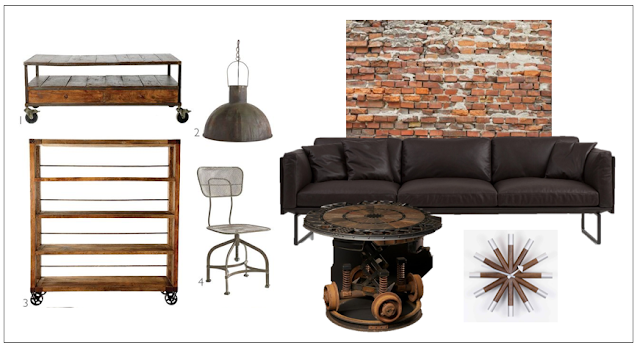INDUSTRIAL REVOLUTION
The Industrial Revolution which took place from the 18th to 19th centuries, was a period during which predominantly agrarian, rural societies in Europe and America became industrial and urban.
Industrialization marked a shift to powered, special- purpose machinery, factories and mass production.
People no longer wanted to do their work manually for the rest of their lives, so they made machinery that was strong enough to do it for them.
Britain was the birthplace of industrial revolution.
Mood Board
In my mood board I have some of the central elements that shaped the Industrial period.
First of all cast Iron and wrought Iron was discovered and used to build iron bridges and major buildings such as the crystal palace. steel and Iron became a game changer in Architecture as it was strong and cheap. The steam Engine was developed by Thomas Savery 1698.
With this mass production came factories but the let down of this was air pollution that covered many areas where mass production factories were built.
In the industrial period Iron, steel, were the biggest they have ever been but it all originated from coke and ironstone which was made from coal with a high carbon content.
Cast Iron and Wrought Iron which is a lot easier to be molded with was
where everything mechanical boomed. The cast Iron bridge was the first major bridge to be made in the world out of cast iron.
Cast Iron and Wrought Iron which is a lot easier to be molded with was
where everything mechanical boomed. The cast Iron bridge was the first major bridge to be made in the world out of cast iron.
Textiles
Steam power
The increasing of steam power with the steam boat and steam engine.
The steam engine being used in industrial setting and in mining. James Watt and Mathew Boulton made an engine-building and engineering partnership. Watt and Boulton became one the most important businesses in the industrial revolution. they served as a creative technical centre for much of British economy. The steam boat was first demonstrated by John Fitch, which had twelve paddles and was propelled by a steam engine.From 1787 to the 1830's, steamboats were improved. In 1787, James Rumsey created the world's first boat moved by jet propulsion.
Overall house scheme
Personally I love this type of look in Interiors and it is very on trend nowadays. Showing the raw materials is always going to favored as it brings so much character to a space and really sets the mood.





Comments
Post a Comment